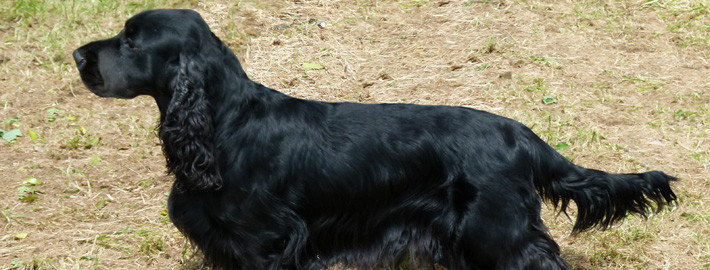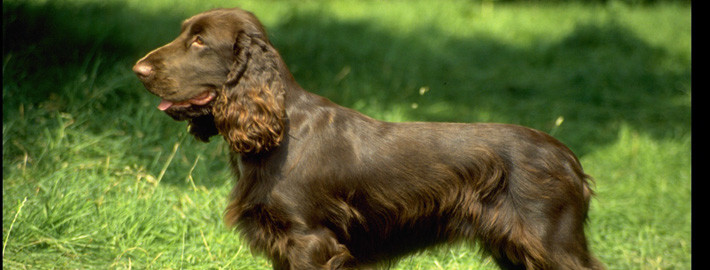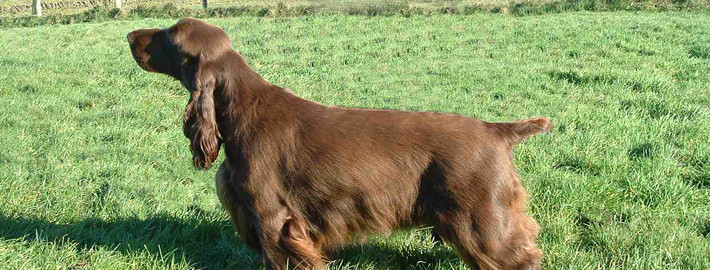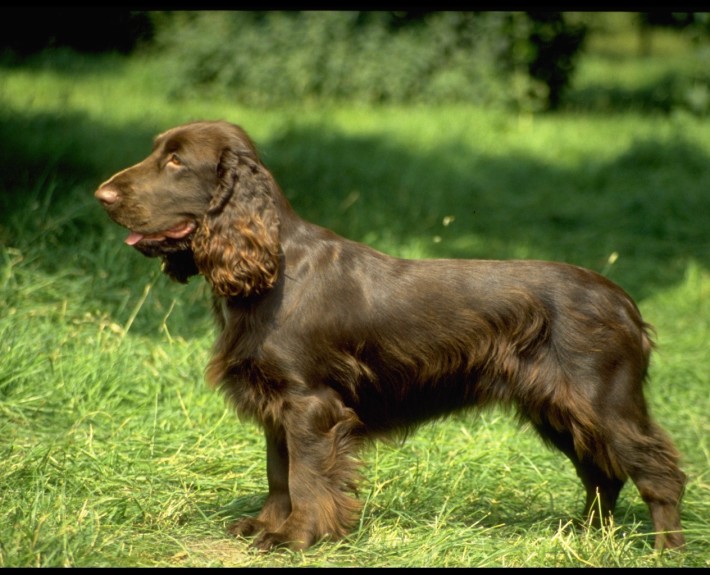What makes the Field Spaniel Unique?
Somewhat longer than tall, solidly built with moderate bone, the field spaniel is a dog without exaggeration, a combination of beauty and utility. Its stride is long and low, with head held proudly and alertly and the tail wagging but not carried high. The field spaniel is built for both activity and stamina, enabling it to hunt in dense cover or water. It has a single coat, which is flat or slightly wavy and moderately long, giving it protection from thorns and water. The expression is grave and gentle. The field spaniel is happiest when it has a job to do. Although independent in nature, it is devoted, sensitive and willing to please. Always cheerful and affectionate, it is an excellent family companion as long as it is given regular exercise. The field spaniel is especially known for its tractable nature. It is typical for a field spaniel to be somewhat reserved with strangers.
Breed Groups
Page Contents
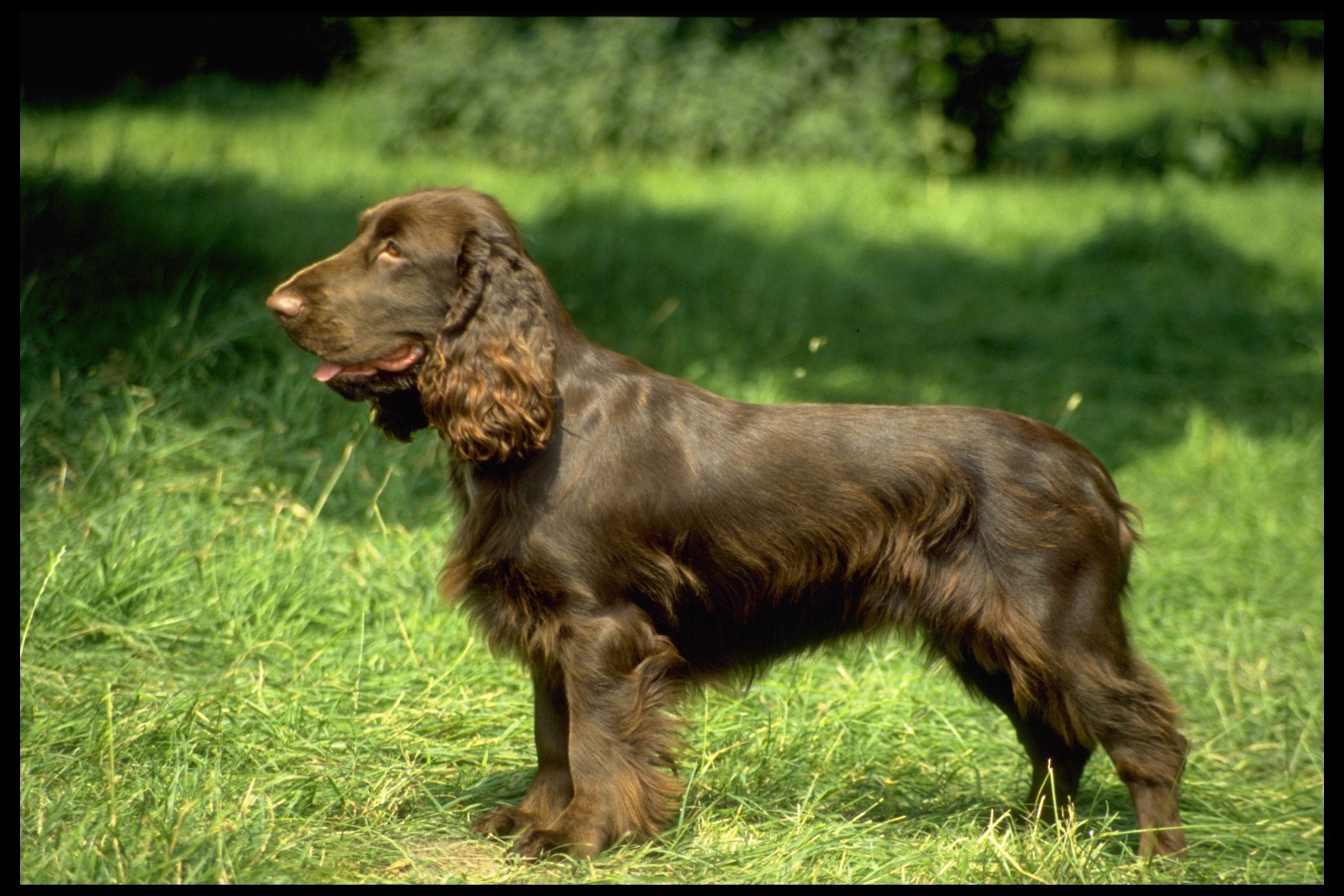
Is the Field Spaniel Right For You?
A docile and fun-loving companion, the Field Spaniel sticks close to his family and wants to participate in any and all family activities. They may be initially reserved when meeting strangers, but quickly warm up to people. They require regular walks, but their medium-length coat (less than other Spaniel breeds) makes grooming fairly easy, requiring only weekly brushing and occasional trimming. If you are considering purchasing a Field Spaniel puppy, learn more. *Sporting Group; AKC recognized in 1894.
*Ideal size: 17 to 18 inches tall at the shoulder.
*Hunting dog.
In 5 Words
- Docile
- Sensitive
- Independent
- Gentle
- Active
Characteristics
Learn About the Field Spaniel
Description
The Japanese Akitas are only allowed in the colors of red, white, or brindle. Those dogs with loose skin, a black mask, or too much mass are not acceptable in the show ring because these characteristics generally mean crossbreeding has occurred. In the United States, Canada, Britain, and the rest of the non-FCI regulated areas no difference in type is made and all colors are allowed. The Akita comes in short and long coat varieties, but the latter is considered a fault in the show ring. The long coat only occurs when two carriers of the recessive trait have offspring. Akita females give birth to between 3 and 12 puppies in each litter.
The Japanese dogs are typically smaller and more like foxes in build than their American counterparts are. Male Japanese Akitas measure 64–70 cm. (25 ¼–27 ½ in.) at the withers, or the shoulder blades, and weigh between 70–85 pounds (32–39 kg.). Female Japanese Akitas weight between 50–65 pounds (23–29 kg.) and stand 58–64 cm. (22 ¾–25 ¼ in.) at the withers.
Female American Akitas weigh 80–120 pounds (36–54 kg.) and are 24–26 inches (61–66 cm.) at their withers. By contrast the male American Akita weighs around 100–145 pounds (45–66 kg.) and stands 26–28 inches (66–71 cm.) at the withers.
Short History of the Field Spaniel
Originating in England in the 1800s, the Field Spaniel used to be considered the same breed as the English Cocker Spaniel. The dog was used to flush and retrieve both fur and feather from land and water. In the 20th century it was decided that anything above 25 pounds would be considered a Field Spaniel and anything below would be an English Cocker Spaniel, and the two were officially separated into different breeds. During the 1800s the Field Spaniel was being bred with a greatly exaggerated length and weight. Almost a hundred years later in the 1920s, the standard returned to a moderate length and weight. Although it is a fine bird dog with a great, mild disposition, the breed remains rare to this day, most likely due to the extreme popularity of the Cocker Spaniel. The Field Spaniel was recognized by the AKC in 1894. Some of the Field Spaniel’s talents are tracking, hunting, retrieving and watchdog.
Temperament
Generally cheerful, the Field Spaniel can prove to be a gentle and sensitive family pet. And though it loves its independence, it is fully devoted to its human master. Additionally, many Field Spaniels shy away from strangers.
Caring for Your Field Spaniel
General Health
A hardy breed due to a variety of ancestors including Cocker Spaniels, Springer Spaniels, Irish Water Spaniels and even Bassetts and Setters; Progressive Retinal Atrophy, a disease of the eye, is known in the breed overseas but all Australian registered breeding dogs should have been tested. Buyers should ask to check appropriate certification; Hip Dysplasia, a degenerative disease of the hip, has shown up in a UK line but is unknown in Australia’s Field Spaniels.
Grooming & Bathing
Field Spaniels should be brushed thoroughly twice a week for about 10 minutes. Feet need to be checked and kept clean of dirt and hair between the toes and in the ears may need removing.
Exercise & Training
The Field Spaniel is primarily a working field dog which means that it really needs lots of exercise, and a sporty family suits it best. It will be happiest when given a chance to run and explore. But be aware that the Field Spaniel likes to follow its nose. It will however, adapt effortlessly to the family situation. Its needs can be met with daily long walks on a leash where the dog is made to walk beside or behind the person holding the lead, as instinct tells a dog the leader leads the way, and that leader needs to be the human.

